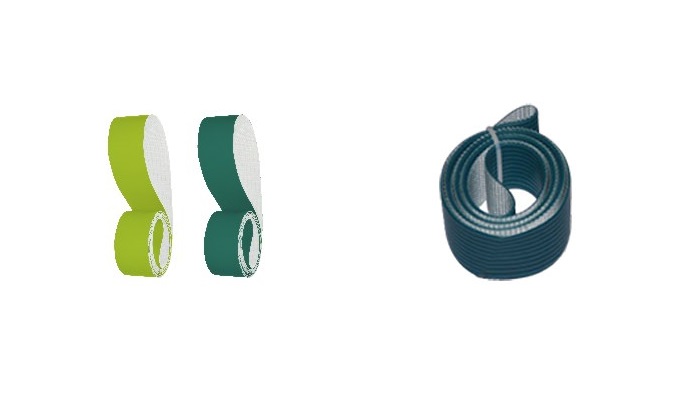- Avoid Using Elastic Retaining Rings To Bear Axial Forces
Elastic retaining rings are commonly used for positioning components on a shaft, but they are not suitable for bearing axial thrust. Their primary function is to prevent parts from disengaging rather than withstand axial forces. Improper installation or inclining of elastic retaining rings in the groove can lead to their easy dislodgement even under mild axial forces. Therefore, ensure that the retaining rings are firmly assembled in the shaft groove.
Due to the weakening effect of the groove on the shaft, this fixing method is only suitable for shaft sections or ends subjected to low forces.
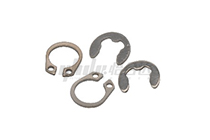
- Shafts or Pins with Different Materials and Heat Treatments in the Same Equipment Should Have Different Dimensions
Parts like shafts or pins used in the same machine or component often have identical dimensions but differ in materials and heat treatment. This makes it difficult to effectively distinguish them during assembly, leading to potential misassembly. To avoid such situations, design the shafts and pins with distinct dimensional variations.
- Avoid Excessively Thin Lower Walls of Keyways On Hollow Shafts
When using keyed connections on hollow shaft sections, pay attention to not making the walls too thin. Thin lower walls of keyways can weaken the shaft excessively, leading to its failure.
- Couplings for High-Speed Rotation Should Not Have Protrusions
Under high-speed rotation conditions, protrusions such as bolt heads, nuts, or other features extending from the coupling flange can increase air turbulence, leading to increased losses and potential safety hazards. Consider embedding protrusions into protective edges of the coupling flange.
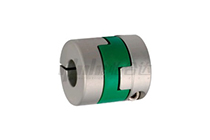
- Flexible Couplings With Elastic Elements Should Not be Used When Synchronous Rotation of Both Ends of the Shaft is Required
When driving components at both ends of a shaft, synchronous rotation is necessary to prevent coordination issues or jamming. Using flexible couplings with elastic elements may cause different torsional deformations at each end due to elastic element deformation, preventing synchronous rotation.
- Do Not Use Universal Joint Couplings at Both Ends of a Shaft Without Bearing Support
When driving components through a middle shaft without bearing support, do not use universal joint couplings at both ends. The floating nature of universal joint couplings can cause instability and even detachment of the middle shaft. Instead, consider other coupling types such as gear couplings with a middle shaft.
- Single Universal Joint Couplings Cannot Achieve Synchronous Rotation of Two Shafts
Single universal joint couplings used to connect intersecting shafts can reliably transmit torque but cannot guarantee synchronous rotation between the driving and driven shafts. In applications requiring synchronous rotation, consider using double universal joint couplings with equal angles between the middle shaft and both driving and driven shafts.
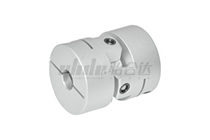
- Bearing Housings Should Direct Forces Towards the Supporting Base
Bearing housings mounted on machine bases should direct bearing forces towards the base interface for secure support. If forces are directed oppositely, the strength and rigidity of the bearing housing will significantly decrease. In cases where forces must be directed oppositely, consider implementing protective measures to prevent shaft ejection in case of damage.
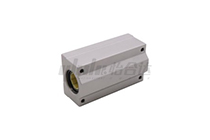
- Combined Helical Springs Should Have Opposite Winding Directions
In situations where cylindrical helical springs experience significant forces and spatial limitations, combined helical springs can be used, with smaller springs installed within larger ones, forming double or even triple layers. To prevent spring wire entanglement, ensure that the inner and outer springs have opposite winding directions and maintain flat end faces to avoid collisions.
- Belt Transmission Center Distance Should Be Adjustable
Due to significant length discrepancies and elongation during operation, belt transmission center distance should be adjustable to maintain initial tension for frictional transmission between the belt and pulleys. Alternatively, consider using other tensioning devices like tensioning pulleys.
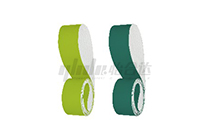
- Chain Drives Should Have the Tight Side On Top
Unlike belt drives, chain drives should have the tight side on top. Placing the loose side on top can lead to increased sagging, making it difficult for the chain to disengage from the sprocket and increasing the risk of entanglement or breakage.
- Double-Sided Fixation is Necessary for Bevel Gear Shafts
Regardless of the direction of rotation, bevel gears always exert axial forces in one direction, typically towards the larger end. It's crucial to fix the axial position of the gear system in both directions to avoid significant vibration and noise.





